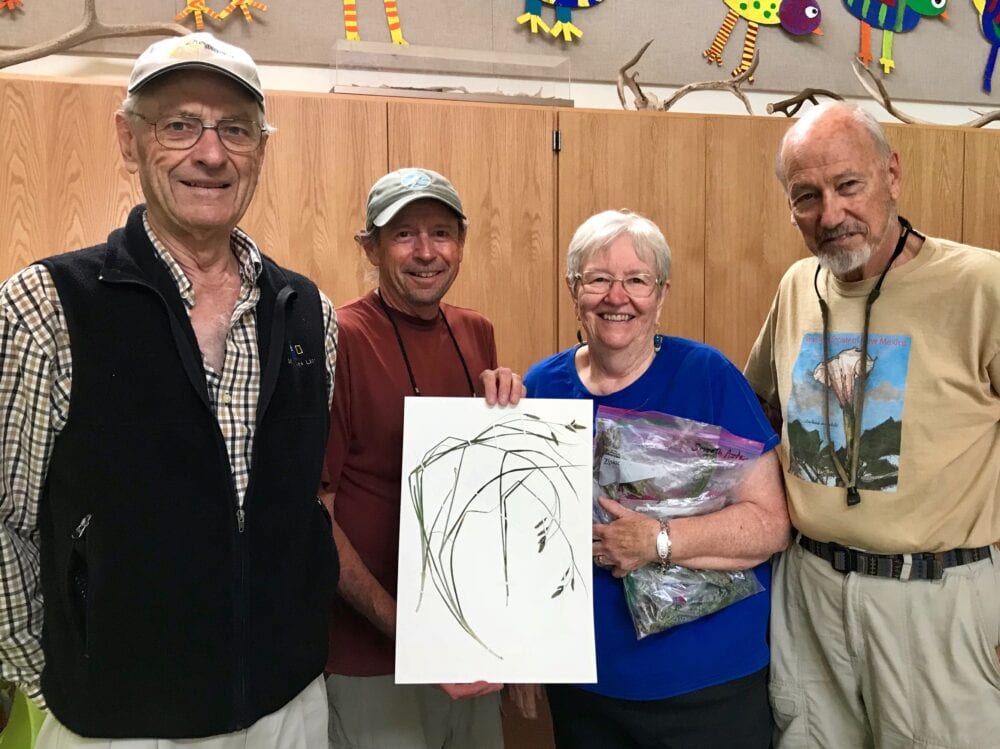By Chick Keller
In 2005 I was given several boxes of professionally mounted and labeled plants that were collected in the Santa Fe National Forest by a student from University of Wyoming, which had been given to the Office of the Santa Fe National Forest. There were some 1,100 sheets — some 750 from the Jemez Mountains. In addition, I had my own informal herbarium at home. On advice from people at UNM herbarium, I purchased a herbarium cabinet and a binocular, zoom microscope. The Native Plant Society of NM reimbursed me for the cost of the cabinet ($1,000) and people in town for the microscope (~$2,000) — the major part donated by The Animal Clinic in Los Alamos. The Forest Service also included some herbarium equipment. LANL was closing down its 15-year effort to collect plants and sent me three more cabinets full of plants as well as a wealth of herbarium paper supplies — folders, mounting sheets, and more. PEEC paid for a set of flower identification books and I added my own. And so, the Jemez Mountain Herbarium was formed.
At the time, there were about 650 species of plants known in Los Alamos County. I asked Dorothy Hoard how many she thought were in the county. She replied with the optimistic number of 1,000. I thought not. How could people have been collecting plants for so many years and missed 350 species and varieties? We bet a pizza.
Sadly Dorothy is gone, but this summer we indeed surpassed the 1,000 mark!
This was the work of many people. Perhaps the most active were Terry Foxx, Craig Martin, and Roy Greiner, but there were some 15 or so others who have brought in plants that are now in the herbarium.
In addition to finding so many plants not previously known in Los Alamos County, we have been concentrating on the entire Jemez Mountain region — from San Ysidro to Ghost Ranch, Cuba to White Rock Canyon. This past year we published in a scientific botanical journal a list of 161 species previously not known for that area, seven of which had never before been seen in New Mexico! We have found a few more since then.
A herbarium is important to the knowledge of plants. It is a repository of the real specimens that can be used for a variety of reasons — extending knowledge of the range of plants, writing plant identification books, such as the ones Terry and Craig are working on, helping beginners learn plants, and finally proving that indeed the plants named were correctly identified.
In addition, it is great fun — the search and discovery, recording their beauty (we have started including photographs), and helping others know and appreciate our natural surroundings.
Read more about Dorothy Hoard in the March 2014 edition of PEEC’s Nature Notes.


Thank You very much for this exceptional article.
Selvi
I love that you are valuing our native plants! I think a lot of us want to know more about this – especially any information on Native People’s use of these plants.
I attended a walk in Santa Fe put on by Tropic of Capricorn a few years back. Everyone there was into identification, history and preservation of these precious life forms.
We need more of these easy walks that can be attended by all ages. ❤️